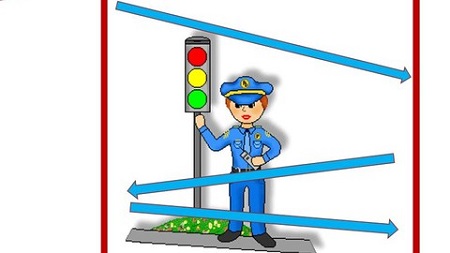
English | MP4 | AVC 1280×720 | AAC 44KHz 2ch | 9 Hours | 5.60 GB
Networking Course, UDP, TCP IP protocol Suite, Flow and Congestion Control, CCNA and others, TCP/IP Complete Course
This is Master Class course on TCP/IP protocol – Transmission Control Protocol. Since it is Master Class course, this course discusses the internal design and functioning of complex transport layer protocol – TCP.
Almost all traffic on internet today is transported by TCP protocol. TCP, as where it stands today, mature and solid, is the result of over 25 yrs of research by network gurus. TCP is complicated and difficult to understand, therefore i have paid utmost attention to present the concept in most simplest way as possible without any loss of information.
In this course, we unwrap internals of TCP and try to understand how it works and why it is so designed. So, be ready and place yourself in first gear !
TCP is difficult to understand and confusing if not done in the right way. In this course, I shall be covering all aspects of TCP internal functioning STEP BY STEP with beautiful diagrams, Assignments, Questions and exercises. At no point you shall be left with doubts is my promise. There is no programming in this course.
This is a little Advanced Course, if you are absolute beginner in networking, I would recommend you to first enroll in my other course “Networking course – Network Concepts and Programming from Scratch” and cover important sections on L2 routing, L3 routing, and Transport Layer at-least before jumping into this course. If you are already familiar with this much networking basics, then you are all set to sail through this course.
What you’ll learn
- Difference between Connection-Oriented and Connection-less state
- Difference between Byte oriented and datagram oriented protocols
- TCP Internal functionality and Mechanism
- Understand how TCP is designed and why
- TCP congestion control, Flow control and Window Mechanism
- Understand TCP graphs and why they look like they are !
- Various other complexties of TCP protocol explained in a simplest possible way
- Assignments and Questions to practice TCP concepts
Table of Contents
Getting started with TCP
1 Agenda of this Course
2 Join Us
3 Overview of OSI model
4 TCP IP Stack Layers Functions – Overview
5 Transport Layer Goals
6 User Datagram Protocol (UDP) – part1
7 User Datagram Protocol (UDP) – Part2
8 Transport Layer Protocol (TCP) – Connection Oriented
9 TCP – Stateful Protocol
10 TCP – Byte Oriented Protocol
11 TCP – Ordered Delivery
12 TCP – Reliable Delivery
13 UDP Vs TCP Protocols – The difference
14 Summary
TCP Preliminaries
15 What in this Section
16 TCP Vs Other Protocols
17 TCP ARQ Challanges
18 TCP Byte Circular Buffers
19 Segments and Sequence Numbers – Part1
20 Segments and Sequence Numbers – Part2
21 TCP Hdr Sequence Number and Acknowledge Number
22 TCP Segments Type
23 TCP Reliable Data Delivery – Revisited
24 TCP Re-transmission Timer Illustration
25 Summary
TCP Connection Management
26 Agenda
27 Who is Server and Who is Client
28 TCP 4-tuples
29 TCP Connection Open – 3-way handshake Explained
30 TCP Connection Closing
31 Sequence Numbers Consumption Rules
32 TCP Connection Timeout and Exponential Backoff
TCP Timeout and Retransmission
33 TCP Re-transmission Timer
34 TCP RTO Problems if computed wrongly
35 Expectations from TCP when it detects Network Congestion
36 TCP Exponential backoff – When consecutive segment loss occurs
37 TCP RTO Value Estimation
38 TCP Retransmission Ambiguity Problem
39 Karns Algorithm – Solution to Retransmission Ambiguity Problem
40 Karns Algorithm Illustration – Example
41 Karns Algorithm Analysis
42 Introducing – Fast Retransmission
43 Out of Order of Reception of Segments
44 Fast Retransmission – Example
45 Multiple Holes Repair through dupACKs
46 Redundant Re-transmissions – Disadvantage of dupACK based Fast-Retransmission
47 Timer Based Retransmission Vs Fast Retransmission
48 Selective Acknowledgements
49 SACKs in Action
50 Cumulative ACKs
51 Cumulative ACK Example
TCP Data Flow Control Control and Window Management
52 What in this Section
53 TCP Send and Recv Windows
54 TCP Send and Recv Window Layout
55 TCP Flow Control
56 TCP Window Advertisement
57 TCP Sliding Window Rules
58 TCP – Window Mgmt Example Set up
59 TCP – Window Mgmt Example – Phase1
60 TCP – Window Mgmt Example – Phase2
61 TCP – Window Mgmt Example – Phase3
62 Example – Observation
63 TCP Tinygrams
64 TCP – Nagle Algorithm
65 TCP – Nagle Algorithm Benefits
TCP Windows Resizing – Shrinkage Or Expansion
66 Factors Influencing Rate of Communication
67 Slow Receivers – Problem Statement
68 TCP Window Resizing – The Solution
69 TCP Window Resizing – Example
70 TCP Window Opening ACK Segments
71 TCP Probe Segments and Silly-Window-Syndrome Problem
72 TCP Silly Window Syndrome Problem
73 TCP SWS Avoidance Rules for TCP Receiver
74 TCP SWS Example
TCP – Congestion Control Procedures
75 TCP – Congestion Control Procedures
76 TCP – Congestion Control Goals
77 TCP – 3 Parts of Congestion Control Procedures
78 TCP – Congestion Window
79 TCP – Congestion Control Algorithms Overview Slow Start & Congestion Avoidance
80 TCP – Slow Start Algorithm
81 TCP – Slow Start Algorithm In Action
82 TCP – Slow Start Algorithm Important Points
83 TCP – Slow Start Execution Graph
84 TCP – Slow Start Threshold Variable
85 TCP – Slow Start Algorithm Flowchart
86 TCP – Congestion Avoidance Algorithm
87 TCP – Congestion Avoidance Algorithm in Action
88 TCP – Congestion Avoidance Algorithms Switching
89 TCP – Concept of Fast Recovery – The optimization
90 TCP – Fast Recovery Procedure
91 TCP Variable Updates in Fast Recovery
92 TCP – Fast Recovery Graph Example
93 TCP – Congestion Control Complete Flowchart
My courses – for FREE !!
94 Bonus – Get my other courses for free.
Resolve the captcha to access the links!